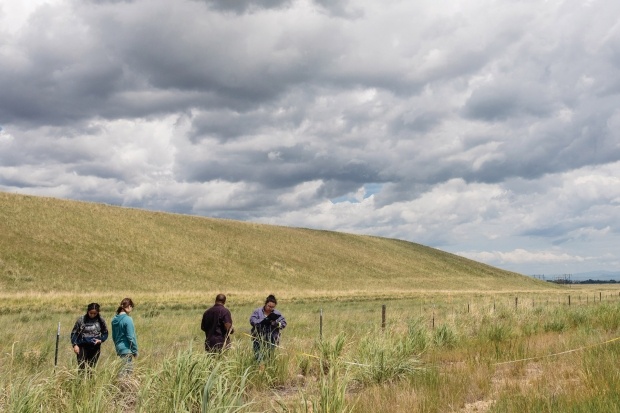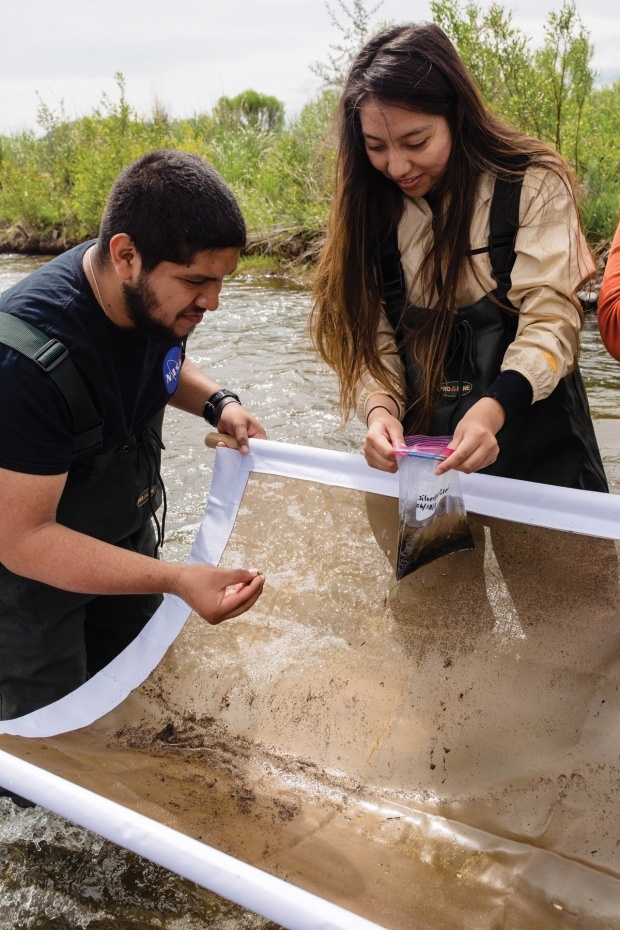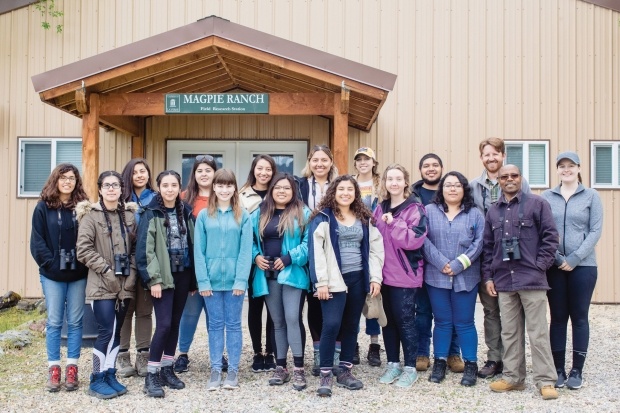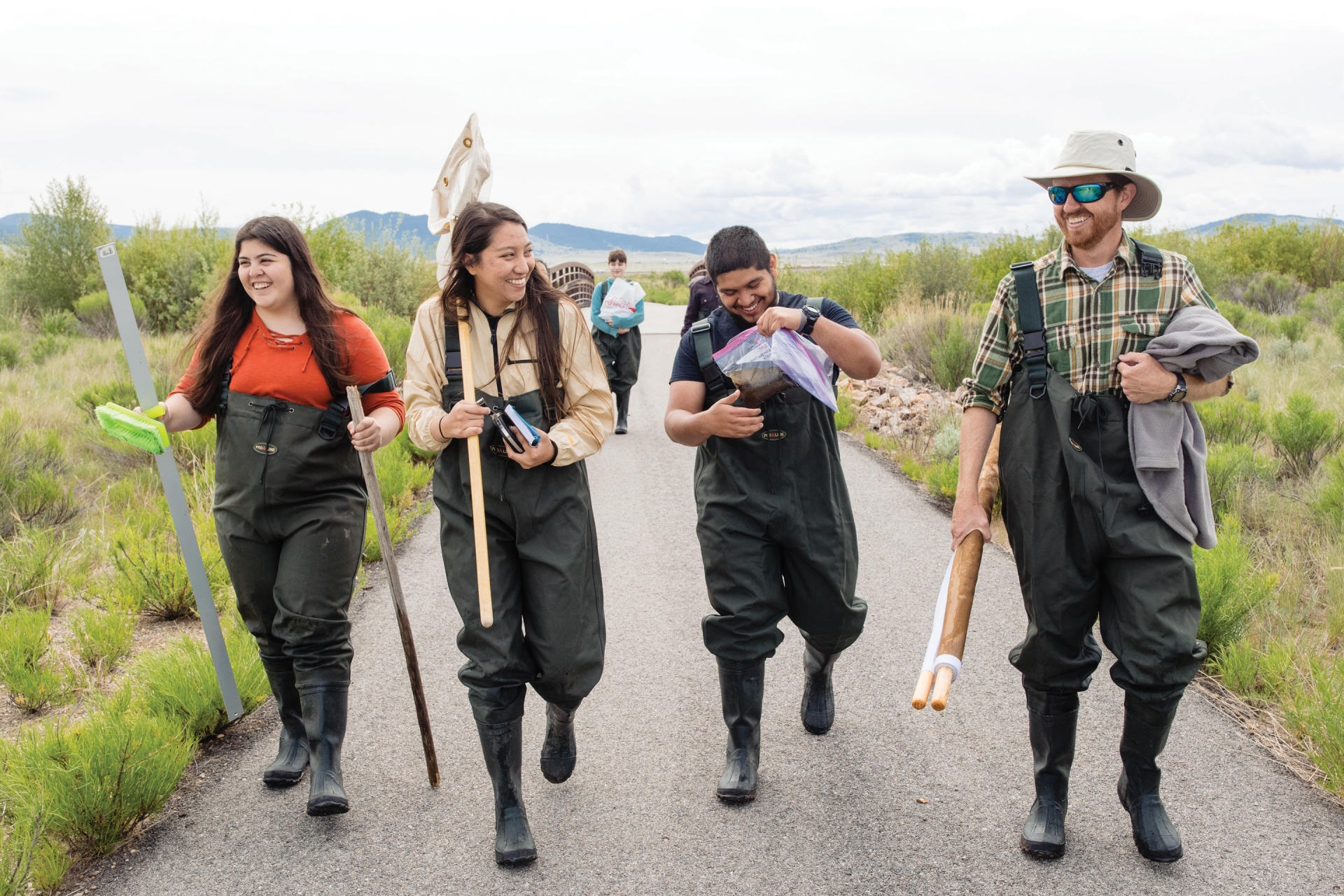Trip to Neher Land
Two weeks on a remote Montana ranch teaches science students new ways to learn.
November 19, 2019
When 14 University of La Verne biology and chemistry students descended on the tiny town of Drummond, Montana, they knew they’d be cut off from the outside world.
No television, Wi-Fi, Snapchat, or texting. No communication with their families.
What they did not anticipate is how it would focus their minds and sharpen their senses.

Upon returning from the two-week summer research project at University of La Verne’s Bob and Mary Neher Field Station, many said digitally disconnecting taught them skills they never would get at home. They also forged new and unexpected relationships with the land and with one other.
“It was an experience I wasn’t prepared for,” said Donald Monzon, a 21-year-old senior from Inglewood.
“We were completely unplugged from technology and really experienced nature and our work.”
After the initial shock, Monzon quickly adjusted to not texting friends or playing video games. “It was really good,” said the chemistry major, who wants to become a doctor. “I learned a lot about myself and what I can do.”
Environmental Learning
That’s the mission of the 187-acre ranch founded 25 years ago by Bob and Mary Neher. The Nehers believe in the importance of connecting students with the outdoors in a learning environment.
“The idea is to immerse them in a new culture, a new ecosystem, and, for many, a completely new way of life,” said Bob Neher, an emeritus professor who taught biology at University of La Verne for more than five decades. He calls the ranch, which was recently renamed for the couple, “a labor of love.”
“I hope it continues to inspire students and reach beyond our campus toward future research partnerships,” Neher said.
During the day, the students worked on their senior research projects. Chemistry students analyzed potential metal contamination in the soil and river sediments in the areas near the historic Anaconda smelting operation. Biology students studied the defensive behaviors of nesting tree swallows. In a biology and chemistry collaboration, students investigated metal contamination in the aquatic food web in streams near the smelting operation.
Located 1,000 miles from campus, the site offers students unique experiences, according to field station director and biology professor Pablo Weaver.

“Chemistry students are looking at copper, cadmium, zinc, and lead levels in the soil around the old mining operations,” Weaver said. “They are seeing up close how it is impacting wildlife and land. Biology students are trained in field techniques applicable to wildlife ecology and conservation management careers.” Victoria Villar, a 21-year-old chemistry major, was amazed to find heavy metal contaminants from the nearby mine affected nearly every living organism in the vicinity.
“We saw dead grass and so much debris,” said the senior, who hopes to be a researcher specializing in toxicology. “We spent a week collecting soil samples and found the contamination from the mine continues.”
Home on the Range
Before they started collecting and organizing field specimens for their senior projects, the students experienced camping and life on a working ranch.
As they made their week-long journey from Los Angeles to Montana, they camped in national parks without showers. They cooked dinner over an open fire. They studied diverse wildlife, from large mammals and birds to insects and snails.
Upon arriving at the field station, the students got a taste of ranch life: mowing and irrigating, building and repairing fences, sanding and painting wooden structures.
“I love to see the teamwork and camaraderie develop as the students settle into the new pace of activities, whether it is working together to pitch a tent, making meals for the group, or packing the overstuffed vehicles with gear,” Weaver said. “It sounds sort of cliché, but the students learn to appreciate unplugging from social media, emails, and texting as they embrace the experience of being in the wilderness and the beauty of the natural world.”

Identifying birds by their songs, waking at 3 a.m. to search for wolves in Yellowstone, endlessly scanning back roads for an elusive moose: activities like these sparked the students “enthusiasm and openness to learning new things,” he said.
Alliyah Garcia ’19 recalled an encounter with a grizzly bear en route to Grand Prismatic Spring.
“We were so excited. None of us had ever seen a bear in the wild,” said the biology major, who graduated in the spring. As the bear cooled off in a pool of water, Garcia said, “I stood there, just observing with my naked eyes, taking in the moment and engraving the visual in my memory.”
Blow-Out Exam
Their evening entertainment came in the form of games and cooking projects.
Late in the program, the students received an unplanned lesson in creative problem solving. Headed back to camp from a day of ranch work, two tires blew out, sending their SUV to the side of a dirt road. When the jack broke, calling AAA wasn’t an option. Miles from
a gas station, they were forced to improvise.
“We had to figure out how to fix this ourselves, and before it got dark,” Villar said.
A quick huddle with Weaver, and they knew what to do. Using their shovels and pickaxes, they dug ditches under the tires, made woodpiles to prop up the axle and safely removed and replaced the flats with spares.
It was a pop-quiz in teamwork, problem solving, and mechanics, mirroring many of the lessons they had recently learned on the ranch.
“It is pretty empowering knowing you can solve problems without outside help,” Monzon said, “and pretty cool to see everyone pitch in.”
